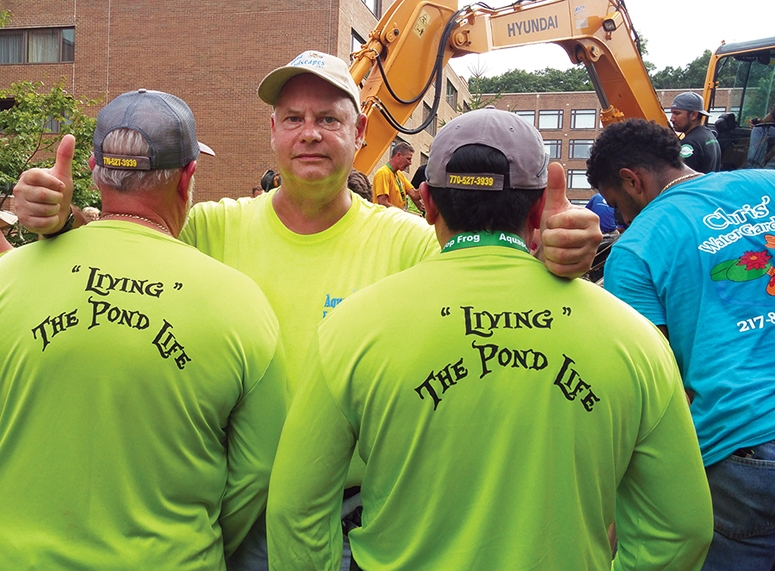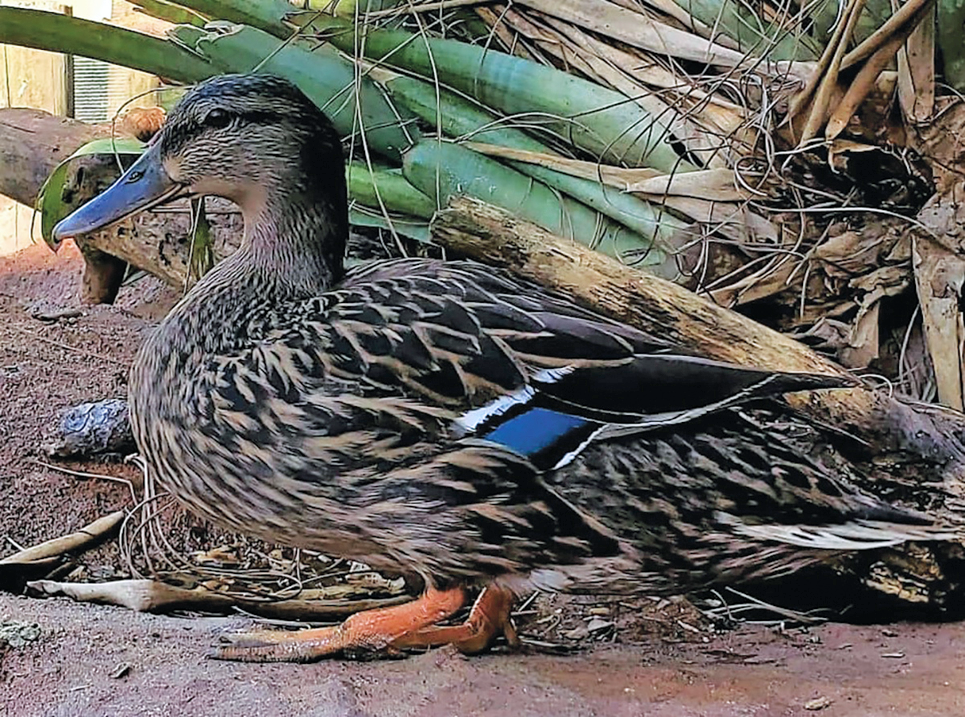
When we started Backyard Getaway in 2004, we knew we wanted our business to be community minded. Giving back and helping local nonprofits was important to us. We held yearly pond tour fundraisers and hosted moonlight socials to benefit our favorite nonprofits.
>> See the related sidebar to this feature article, "Exotic Animals' Home Away From Home in Florida."
During our third annual pond tour, we met the founders of Farmhouse Animal and Nature Sanctuary in Myakka City, Florida, a local wildlife farm and exotic animal sanctuary. They ended up contacting us to install a fountain on their natural pond.
We fell in love with what they were doing. Soon we were volunteering at the sanctuary on a regular basis. We even became live-in caretakers for two years while the founders were making plans to retire. Little did we know when we met them, we would end up taking in their animals 10 years later when they closed and starting our own 501(c)(3) nonprofit farm and exotic animal sanctuary.
Many of the animals at the sanctuary are here because of neglect, abuse or medical or age-related issues. We recognize the healing and relaxing properties that moving water has not only for people, but also for the animals.One of our goals for the sanctuary is to create a water feature of some type in each animal habitat. Our sanctuary relies on donations, grants and income from our pond business to care for the animals and create habitats that are as close to nature for the animals as possible. We are lucky, though, that our Backyard Getaway team volunteers their time to help with these projects.
In addition, we work with the Florida Fish and Wildlife Commission’s amnesty program. From time to time, we will be asked to take in animals that were confiscated or turned in to the program. Last year we were asked to take in a flock of orphaned Muscovy and Mallard chicks. Both are considered nuisance animals in Florida and must be kept in an enclosure. We agreed to take them in and began planning the new habitat. Shortly thereafter, we were asked to take in seven confiscated red-eared slider turtles that are not native to Florida and must also be kept in an enclosed area. We decided this would be their home as well. Dave was excited to have an excuse to build a new pond on the property.
Related Article | Living the Pond Life, More Than Just a Hobby
Living the Pond Life!
Pond with a Roof
We decided on an area that had an existing small runoff area and rain garden filled with iris, taro and parrot’s feather. The runoff area became part of the habitat, giving the ducks a place to dig bugs out of the natural-dirt bottom and some plants to munch on. Again, Muscovy and Mallards must be kept in an enclosure to keep them from mixing with native ducks and destroying native habitats. So with that in mind, we installed a 30-by-20-foot metal-framed enclosure that was 10 feet high. Per FWC regulations, we had to install a concrete border around the enclosure so the turtles couldn’t dig out (and predators can’t get in). The frame is covered with Knitwire material, which is super-strong but very lightweight.
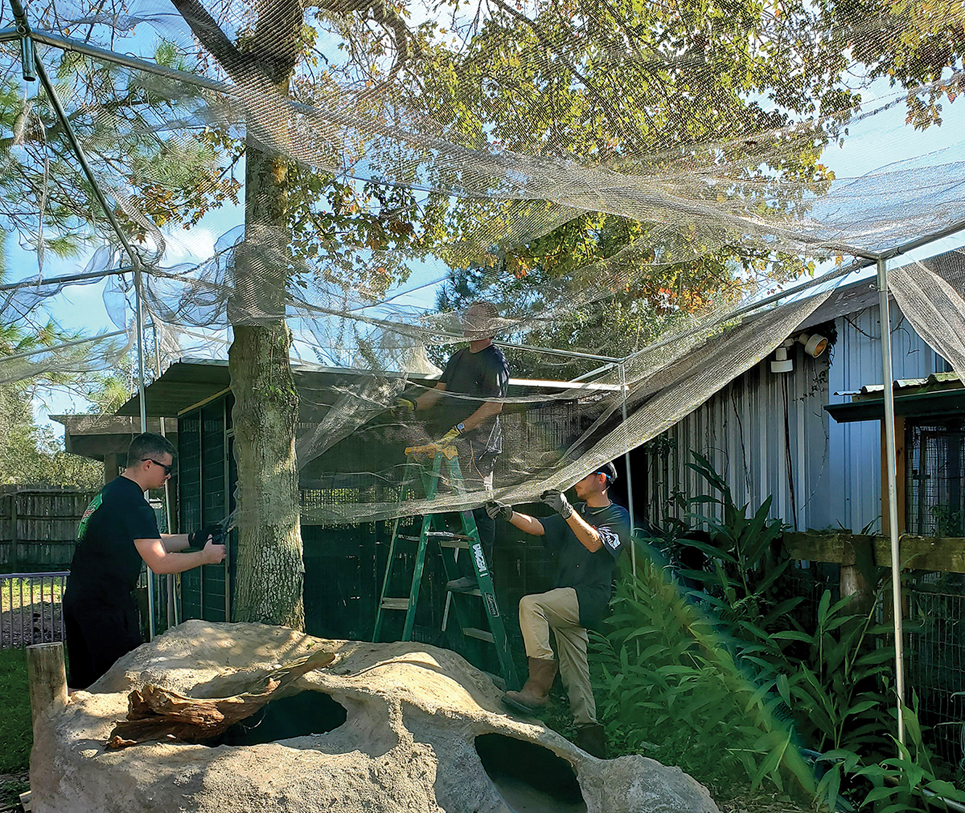
Once the enclosure was completed, we got to work on the pond. Because the runoff-rain garden area is dry for half the year, we needed to add a pond that we could regulate. It had to be deep enough for the ducks to swim and dive in. The liner pond is approximately 12 by 15 feet and 3 feet deep and was placed next to the runoff-rain garden area and raised slightly higher so runoff would not fill the pond. We could have made the pond larger, but we wanted to keep a grass-covered area and a paver space for feeding. There is also a small “house” with a metal roof for them to get out of the weather.
For more information, visit these online outlets: Farmhouse Animal and Nature Sanctuary (www.farmhousesanctuary.org), on Facebook at facebook.com/farmhouseadventure and Instagram at instagram.com/farmhousesanctuary.
The pond filtration system consists of a bottom drain that is plumbed through an Aqua UV Ultima II 4000 biofilter and an external self-priming 4,600-gph pump that feeds back to the pond through a bog waterfall. Although the pond is completely enclosed, we decided to add a skimmer box to collect the duck feathers. The skimmer houses a 2,400-gph pump that returns to the pond through an Aqua UV frog spitter with built-in UV that we had on hand.
Duck, Duck, Turtle!
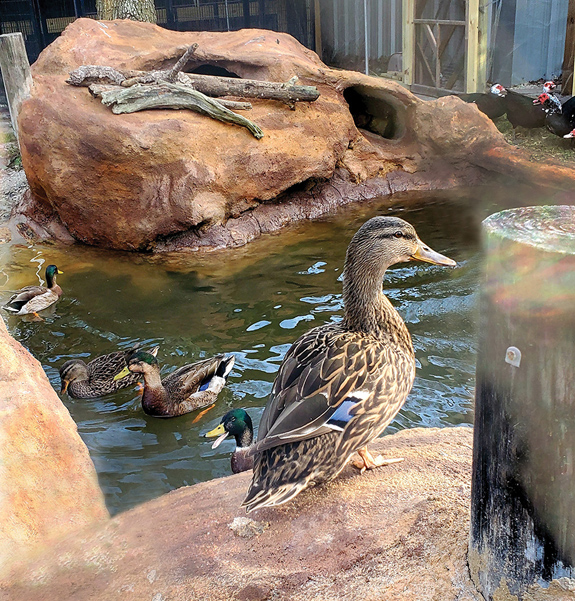
The next decision we needed to make was what type of rock to use to build the waterfall and pond edging. With 13 ducks, we knew that the rocks would be a covered in droppings. We needed something that would be easy to maintain.
Dave decided that creating a smooth, faux-rock waterfall with continuous edging would be the easiest for the volunteers to rinse and keep clean. The ledges around the perimeter of the pond were created with the edge dipping into the pond water in a few areas so the red-eared slider turtles could easily get out of the water to sunbathe. There are also small caves built in for the ducks to nest.
The waterfall was created as a bog, but we soon found out that ducks will eat every plant you put in the pond (and they like to swim in the bog, too). To the left of the waterfall, there is a sloped entry into the pond that replicates walking into a lake or natural pond, making it easier for the ducks and turtles to walk into the water. It is also an easy entry point for us to scrub the waterfall.
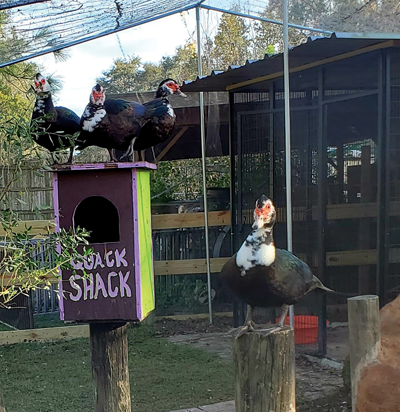
Wire mesh, rebar and wire ties were used to form the base for the rocks, caves, waterfall and edging. Unfortunately, the area was not accessible for a cement truck, and because we were only able to work on the pond during our free time, we used a portable cement mixer and mixed small batches of the faux-rock material, which was troweled over the wire mesh about 2 inches thick to create the basic form. A finish coat with colorant and sealant was then sprayed over the base coat.
The project turned out exactly how we wanted it to look and is very easy to hose off daily. The ducks and turtles seem very happy — and we never have a shortage of duck eggs! Our next water feature will be a grotto waterfall and lagoon in our kangaroo yard.

